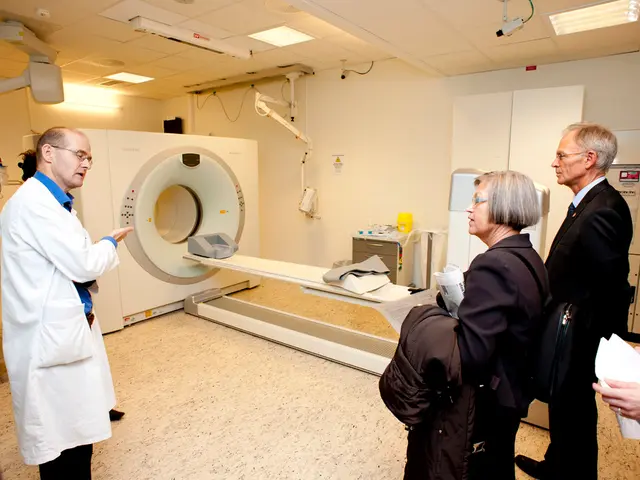Debate Arises over Lifesaving Baby Boxes: Potential Lifeline or Criminal Conduit for Mothers?
Reimagining the Controversy: Baby Savers vs Maternal Support Grants in South Africa
In the heart of South Africa's ongoing debate, Baby Savers South Africa and the government find themselves at odds over Gauteng's ban on the use of baby boxes, also known as "baby savers". Are these boxes a dangerous tool aiding child abandonment and trafficking, or a lifeline for mothers left with nowhere to turn?
Since the installation of the "Door of Hope" at a Joburg church in 1999, hundreds of babies have been left safely in these boxes by mothers facing desperate circumstances. This method, referred to as "safe relinquishment", provides a safe, anonymous option for mothers in need. However, South Africa's current legislation does not recognize this practice.
Baby Savers South Africa is now taking the Gauteng department of social development (DSD) to court, alleging that their ban on baby savers is unfounded, as it promotes abandonment and child trafficking. But some experts argue that with about 3,500 babies abandoned each year in the country, the government's resources would be better utilized by providing practical help in the form of a maternal support grant.
Health Beat raises the question: could a maternal support grant change the landscape of infant abandonment in South Africa?
Supporters of the maternal support grant argue that its direct financial assistance could mitigate economic stressors linked to abandonment, providing a solution to the root causes rather than just managing the outcomes. However, it's crucial to remember that grants alone might not resolve additional issues such as societal stigma, mental health crises, or lack of social support.
Given these considerations, it's essential to recognize that neither approach should be considered in isolation. A comprehensive solution would likely involve combining maternal support grants with regulated safe relinquishment systems and enhanced social services, providing a safety net for those in crisis while addressing the underlying issues that contribute to unwanted pregnancies and abandonment.
It's worth noting that the debate extends beyond these two interventions. Structural barriers, such as poverty and limited opportunities for teenage mothers, play a significant role in perpetuating cycles of unwanted pregnancies and abandonment. Addressing these systemic issues demands investment in education, healthcare, and employment opportunities alongside monetary support.
Ultimately, a more sustainable reduction of infant abandonment rates may be achieved by focusing on a holistic approach that seamlessly integrates different facets of support, ranging from financial assistance to social services. The government's current approach, which involves banning baby boxes without providing adequate alternatives, may inadvertently exacerbate unsafe abandonments.
- In Gauteng, newborns abandoned safely through the practice of safe relinquishment face uncertain legal recognition, as the government's ban on the use of baby boxes (baby savers) persists.
- Amidst the controversy, the offer of baby savers is at odds with the government's policy-and-legislation, with Baby Savers South Africa taking the department of social development to court over the ban, contending that it encourages unsafely relinquished babies and child trafficking.
- Science and health-and-wellness experts posit that maternal support grants could reshape South Africa's infant abandonment statistics, alleviating economic stressors linked to relinquishment and mitigating the root causes of the problem.
- As the debate on Baby Savers vs maternal support grants unfolds in the realm of politics and general news, some proponents of maternal support grants concede that grants alone might not address other contributing factors, such as societal stigma, mental health crises, and lack of social support.
- To tackle the public health and social issue of unwanted pregnancies and infant abandonment, a comprehensive solution would likely require an integration of maternal support grants, regulated safe relinquishment systems, and enhanced social services, as well as addressing deep-rooted systemic issues in education, healthcare, and employment opportunities.








